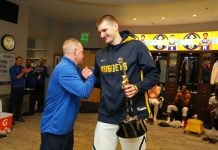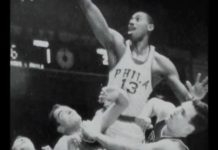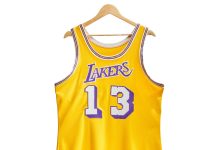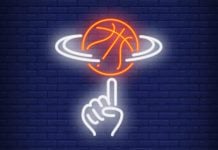Bruce O’Neil was an integral part of international basketball for decades.
He made a lasting impact on the coaching fraternity, on players’ lives, on building a global basketball community.
O’Neil died of a heart attack on Nov. 21 in Oregon. He was 75.
He is survived by his wife, Eileen, four children, six grand children and one great-granddaughter.
A lifetime in basketball
A native of Tacoma, Washington, he played college ball at the University of Hawaii in the 1960s. After settling in Oregon, he returned with his bride to Hawaii to complete his bachelor’s degree. O’Neil also landed a job as the top assistant coach for Hawaii in 1969. At age 27, he took over as head coach in 1973. It was a short stint in charge for O’Neil.
Hawaii did experience success and high-profile opponents during O’Neil’s stint at the helm. For instance, in the 1974-75 season, Hawaii played Bobby Knight-led Indiana in the Rainbow Classic title game. The Hoosiers, who were ranked No. 2 at the time, went 31-1 that season. Indiana won the game 69-52.
During O’Neil’s third season at the helm, he was axed in 1976.
Former Rainbow Warriors player, assistant coach and head coach Bob Nash remembered O’Neil as an important figure in Hawaii hoops history.
“He was chiefly responsible for recruiting the great talent to UH in the ’70s,” Nash said recently. “He made some laps in judgment that cost him from being a long tenure coach at Hawaii. He and his family are dear friends of mine and it’s so sad he left us so soon.”
O’Neil was involved in various basketball-related projects for the next decade and a half before finding his true niche. He served as president of the United States Basketball Academy from its inception in 1992 until his death.
The USBA provided opportunities
Five years after a dream was hatched, the USBA opened its doors. It was nestled in an ideal setting, away from the hustle and bustle of the big city and a myriad of actions. The USBA campus is 47 miles east of Eugene, Oregon, and sits on 46 acres in the McKenzie River Valley in Blue River. It was there where Bruce O’Neil forged lifelong connections with generations of players and coaches. Perhaps in the future a gym in China will have a statue of him proudly on display.
O’Neil has been instrumental in helping growth the game in China since the USBA was established. His obituary, which was posted on tributearchive.com noted: “With over 130 trips to China, he is considered one of the foremost experts regarding China basketball. During those years the USBA has trained over 2,000 Chinese players, coaches and administrators at its world class training facility in Oregon and Bruce has led over 30 USA all-star teams to China for various competitions…”

Longtime international basketball coach Bob Pierce, who has guided teams in China and Japan throughout the 21st century in addition to his current work as a scout for the Miami Heat, was a close friend of O’Neil’s and witnessed his love for the game and the role that the USBA played in helping grow the game.The USBA became a destination to go to to learn about the game.
“(It) has hosted basketball teams and coaches from around the world,” Pierce noted. “Japan, China, Korea, Colombia, England, Lebanon, these countries and more have sent teams ranging from youth and college teams all the way up to the top professional and national teams, to train and learn from some of the top coaches in the United States.
“Cabins on the camp site are named after coaches like John Wooden, Pete Newell, Dale Brown, Jim Harrick and Bob Hill, all famous coaches who helped Bruce bring the USBA into existence.”
Chamberlain ‘encouraged’ O’Neil to open a camp
“Wilt Chamberlain was the one who encouraged Bruce to open up a basketball camp, and also insisted that the words ‘United States’ be part of the name,” Pierce recalled. “A picture of a young Yao Ming standing outside the Great Hall greets visitors to the USBA’s dining hall.
“During my busiest summer working at the USBA in 2006, former NBA Hall of Fame players Rick Barry and Kareem Abdul-Jabbar stopped by to visit Bruce O’Neil and watch the camps.”
Reflecting on his long friendship with O’Neil, Pierce admitted that “I find it hard to believe that Bruce has left us.”
Pierce added: “He was one of the most positive people I have ever known with a great vision for what basketball could be in China and around the world. My lasting image of Bruce will always be him grilling steaks outside the Great Hall at the USBA, smiling and happy to be hosting players and coaches from somewhere around the world. “

Final interaction with O’Neil
Two days before he passed away, O’Neil connected with Pierce via WeChat.
Kevin Zhang, a 6-foot-9 rookie for the Liaoning Flying Leopards had notched a double-double (13 points, 11 rebounds) in his first official Chinese Basketball Association game.
O’Neil was delighted to receive the news from Pierce.
“That’s my boy!!”O’Neil replied on the social messaging app.
Strong ties with the students
“Kevin Zhang is another in a long line of Bruce’s ‘adopted sons and daughters’ in China,” Pierce pointed out.
He went on: “Over the past 20 years almost every important player, coach, or top league official from China has spent time with Bruce at the USBA in Blue River, Oregon or has stayed at his home in Eugene. Many lived with Bruce and his wife for months at a time. Kevin had done both, staying with Bruce to improve his English, then moving on to play high school basketball at two different schools before playing two seasons at Tulane University. Bruce also took his grandson Kaelan’s high school team (South Eugene) to Shenyang, China, Kevin’s hometown in Liaoning province, on a summer trip partially arranged by Kevin’s mom, a high-ranking government official in Liaoning.”

First visit with O’Neil in 1997
For Bob Pierce, his first interaction with O’Neil occurred in 1997, when he was serving as an assistant under Bob Gaillard at Lewis & Clark College in Portland, Oregon.
O’Neil and Gaillard were friends, and had been coaching rivals when Gaillard worked at the University of San Francisco. (He was the 1977 NCAA Coach of the Year.)
“We drove down to Blue River, Oregon, to Bruce’s unfinished camp site, for a fantasy basketball camp featuring a Hall of Fame former NBA player, Rick Barry,” Pierce recalled. “The indoor gym hadn’t even been built yet, so all drills were done on the outdoor courts. Which became a problem the next day when it rained and forced us indoors. That led to a day of watching basketball videos that Bruce’s video company had produced. The highlight of the weekend was an outdoor dinner and campfire, with a fantasy camper asking Rick Barry if he thought Michael Jordan was the greatest player of all time. (The look on Rick’s face was priceless. I’m not sure you can ask Rick a question like that without including him as one of the contenders for the title.)
“With no gym, and only a handful of campers at the unofficial opening, it was hard to imagine what the USBA would become. Only a few months later, I left for Japan to become the assistant coach for the Hitachi Rising Sun in the JBL 2nd Division. My coaching career in Asia and the USBA have the same birth year, 1997.
“Every year when I would return to Portland, I would visit with Coach Gaillard. He would update me on the USBA, and talk about his trips to China with Bruce to do basketball clinics. I was getting more intrigued, especially after Bob told me about the first Big Man and Guard Camp held at the USBA featuring Kareem Abdul-Jabbar and former NBA guard Jay Humphries.”

A visionary leader
Bruce O’Neil wasn’t interested in just teaching the game in the Oregon backwoods. He had lofty ambitions. He wanted to spread the institute’s knowledge by working in the world’s most populous country.
“In January of 2005 I let Bruce know I was in Beijing to watch a few CBA games,” Pierce stated. “The day before I was set to return to Japan, I received an email from Bruce saying he had arrived in China to do a clinic for college coaches, which included an invitation to join them at the Olympic Training Center. Over the next couple of days, I was able to watch Jim Harrick and Bob Hill do their clinics. I also traveled with them to visit the Great Wall.
“When we parted ways, Bruce extended the invitation to work at the 2005 Big Man and Guard Camp, which was going to be run by Bob Hill. Bruce was always a big picture guy, a dreamer, someone who had ideas that others would call crazy. Within months, as the Big Man and Guard Camp approached, Bruce had convinced me to leave Japan to help him start the USBA Chinese Institute that he was planning to open in the fall of 2005.”
Hill dished out hoop wisdom
Traveling back and forth across the Pacific Ocean provide opportunities for Pierce to be around O’Neil’s well-connected circle, which included some great basketball minds and innovative thinkers.
Just ask Pierce.
“Working with Bob Hill at the 2005 Big Man and Guard Camp was like getting an advanced degree in basketball,” he said recently. “Several big men from the University of Kentucky and the University of Oregon were in attendance. This is why coaches came to the USBA. We often learned more than the teams and players who came there to train.”
The camp produced a competitive environment.
Which, in turn, prepared players for potential careers in the pros.
Pierce recalled, “The Big Man and Guard Camp was immediately followed by the CBA Draft Camp. Nineteen of the 20 CBA teams from China came to the USBA to watch dozens of prospects play and then draft two for their teams. This is where I saw the compassionate side of Bruce. Coaching at the highest levels is tough. Coaches get fired for losing. Some know they will never coach at the NCAA D-I level again. One of the coaches in 2005 was Pete Gillen, who that year was fired after seven seasons at the University of Virginia. Pete had been Bruce’s assistant at Hawaii in 1975-76. Many coaches used the USBA as a way to make connections for their next job, or like Pete, to transition from coaching into broadcasting.
“In the evenings the coaches, from the NBA, NCAA, NAIA, and overseas would sit in the cabins named after Dale Brown, Pete Newell, and John Wooden talking basketball. Some of the best clinics I’ve ever attended were in these evening sessions.”

USBA Chinese Institute’s Mixed Success
After many delays, on October 21, 2005, nine of the eventual 10 young players arrived at the USBA from junior teams in China.
It was full immersion in basketball, academics and American culture for them, including homestays with American families over the Christmas holidays.
“We played games against the JV teams at local colleges like Willamette University in Salem, and Concordia College in Portland,” Pierce noted. “One of them went to on to play at the University of Hawaii before returning to play in the CBA for a few seasons. Two of these original players are still playing in the CBA during this current 2020-2021 season. The USBA Chinese Institute only lasted a few years, but it typified Bruce’s ambitious projects.
“I lived at the USBA during most of 2006, again working at the Big Man and Guard Camp and the CBA Draft Camp. The bj-league commissioner, Toshimitsu Kawachi, was also a guest at the USBA that summer as he wanted to see how the CBA Draft Camp worked. Later in the summer we also brought the Nihon University men’s basketball to the USBA for a training camp.”
For Pierce, back to Asia
Even after his work took home back to China, then Japan and back to China again, Pierce found fulfillment in staying connected with the USBA and his good friend Bruce O’Neil.
In short, it was a yearly ritual.
“I left the USBA in the fall of 2006 to start a new team in Shenzhen, China. Later returning to Japan to spend five seasons coaching in the bj-league. But from 2006 until 2019 every time I returned to Portland, Oregon, I would drive down to Eugene to visit Bruce,” Pierce explained.
“I would usually arrange my trips based on who was visiting the USBA. Training camp for Zhejiang Guangsha from the CBA. A club team from Colombia. The Bulldogs from London, England. The Beijing Ducks junior team. The Beijing women’s team. Three young players from Korea. A young prospect from Mongolia whose father was 7 feet tall. The junior women’s team from Shandong, China.”
COVID-19 disruptions
Until the end of his productive life, Bruce O’Neil was always thinking of ways to grow the game, connect people and provide opportunities.
Case in point: His latest project “was a cooperation with Beijing Shougang, the parent company of the Beijing Ducks, to host their Pioneer Program,” Pierce reported. “In 2019 there were about 50 young Chinese players living at the USBA, playing basketball and studying English, with the goal of eventually enrolling in high schools or colleges in the United States.
“COVID-19 disrupted the program in 2020, and now with Bruce’s passing, no one knows what will happen to it. But it certainly illustrates Bruce’s ambitious plans to help as many basketball players in China, and around the world, as possible.”
A special environment
While the USBA Chinese Institute didn’t have a long history like its founder in Oregon, it left an indelible mark on former players. And that fact resonates with Pierce when he thinks about the special bonds that were formed there.
“I stay in touch with many of the original USBA Chinese Institute players from the first two years,” he said. “Many are now married with kids, working at normal jobs. All are still involved with basketball and dream of meeting again at the USBA in Blue River, Oregon, with their kids in tow, so that their children can experience the same things that they did.
“That is Bruce O’Neil’s legacy.”
For more information about the United States Basketball Academy, visit usbausa.com.
















